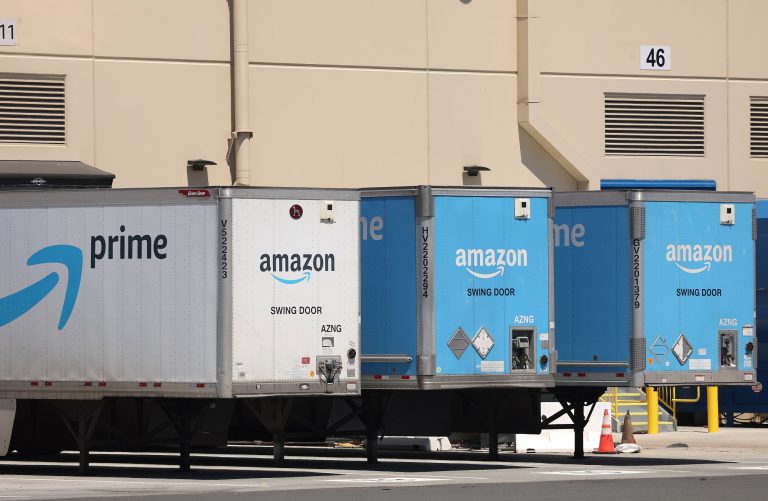If you’re subscribed to Amazon Prime, you should be getting an e-mail from the retailer (if you haven’t already) with the following seemingly innocuous subject line: “An update on Prime Video.”
That missive actually hit my inbox yesterday, and it revealed the following news. Starting Jan. 29, Prime Video will begin including a limited ad load in the content that you watch. Amazon’s streamer is, of course, completely ad-free now, which means that if you want to keep it that way, you’ll have to pay an additional $2.99/month. And, by the way, just to be clear — this only extends to the TV series and movies available on Prime Video. I know it can get a little confusing, but an Amazon representative confirmed to me — no, they aren’t about to start including ads in TV or movies that you buy from Amazon.

Anyway, my initial reaction — like many people’s, I suppose — was that this move by Amazon to squeeze more revenue out of its streaming video service was built on a fundamental miscalculation of consumer psychology. One that, you could argue, also now extends to much of the entire Amazon Prime subscription offering.
What do I mean by that? Well, I don’t know about you, but I when I originally signed up for Amazon Prime, I was super excited to pay the nominal yearly fee for free 2-day delivery on everything I ordered. The same went for Prime Video; one of my expectations, from day one, was an ad-free video experience as part of that overall Prime subscription cost.
Regarding this latest Prime Video development, the glass-half-empty perspective is that Amazon has gotten quite comfortable over the years with asking you to pay more for Prime, while at the same time, I’ve found shipping times to be all over the map (though that’s largely a function of the third-party retailers I buy from, through Amazon). And now, on top of that, I’m having to pay more to keep the Prime Video status quo that I was previously enjoying. “This is pissing a lot of people off,” one Redditor noted in a thread this week about the imminent inclusion of ads on Prime Video.
“They start remembering the fact that their packages haven’t been getting delivered in two days. That they probably don’t even watch that much on prime in general (unless Thursday night football, but just go to a bar). And it just doesn’t add up.”
The miscalculation that I referenced above is related to a simple cause-and-effect relationship that I expect as a consumer: Namely, that when I pay more, I should generally get more.
Now, notwithstanding the Prime Video news, Amazon will certainly argue that you very much do get more as part of a Prime subscription today — and that’s technically true. When I first signed up for Prime, for example, the bundle didn’t include 100 million songs and millions of podcasts available via Amazon Music, nor low-cost prescription medications that are available via Amazon Pharmacy, plus Prime Gaming benefits, access to Gruhub+, and so much more.
It’s obviously a good thing that all of those offerings became available later on — but they’re also not why I signed up for Prime to begin with. It was really quite simple; I wanted the super-fast, free shipping, and, to a lesser extent, the Prime Video experience that included no ads.
All of this could lead one to ask: Is an Amazon Prime subscription still worth it today?
My answer is still yes, albeit with an asterisk.
As far as Amazon itself, the main Prime benefit (for me) has shifted from fast shipping to the overwhelming product availability that’s still generally better than anywhere else, at least as far as my needs go. Much of what I buy these days comes from shoppers that Amazon has minimal control over, so I understand the shipping patterns will vary. Which is to say, my satisfaction with Prime has evolved — but at least the overall convenience is still there.
When Prime was launched back in 2005, the value proposition was extremely customer-focused. Amazon identified a desire that the company knew would attract people. All of us at the time were getting killed paying for shipping. And say what you want about Prime Video’s entry into the picture, but at least it was a blissfully ad-free space.
Furthermore, Prime Video has since grown into quite a robust streaming platform — which is great news, since none of us should want a streaming landscape where it’s basically Netflix, and then a bunch of also-rans. As big as Netflix has gotten, it kind of feels like it’s increasingly drifting toward the middle of the road, while Prime Video still offers plenty of edgy, interesting, and addictive content (Reacher, Gen V, Jack Ryan, The Power, The Boys, Fleabag, and The Expanse, to name just a few).

That said, there’s nothing customer-focused about the way ads are handled almost anywhere on the internet. And forcing people to pay to avoid them just feels like nudging your already marginal customers toward the door (“I was barely watching it as it is, so how about I just cancel entirely in order to see no ads?”).
I’ve gone ahead and pre-ordered the ad-free Prime Video tier (which you can do by visiting the link below), but my bigger fear is that this is going to give other streamers some bright ideas. Like — we’re going to keep a featured ad stuck to your content while you watch unless you pay extra. You can pay extra to skip all ads after five seconds. Pay extra to go ad-free for six months.
It’s not exactly a revelation to stress that no one, absolutely no one, enjoys ads. We tolerate them, at best. This is also not that hard a concept to grasp: The more you force people to endure something they do not want, the greater the likelihood that you send them running for the door.







